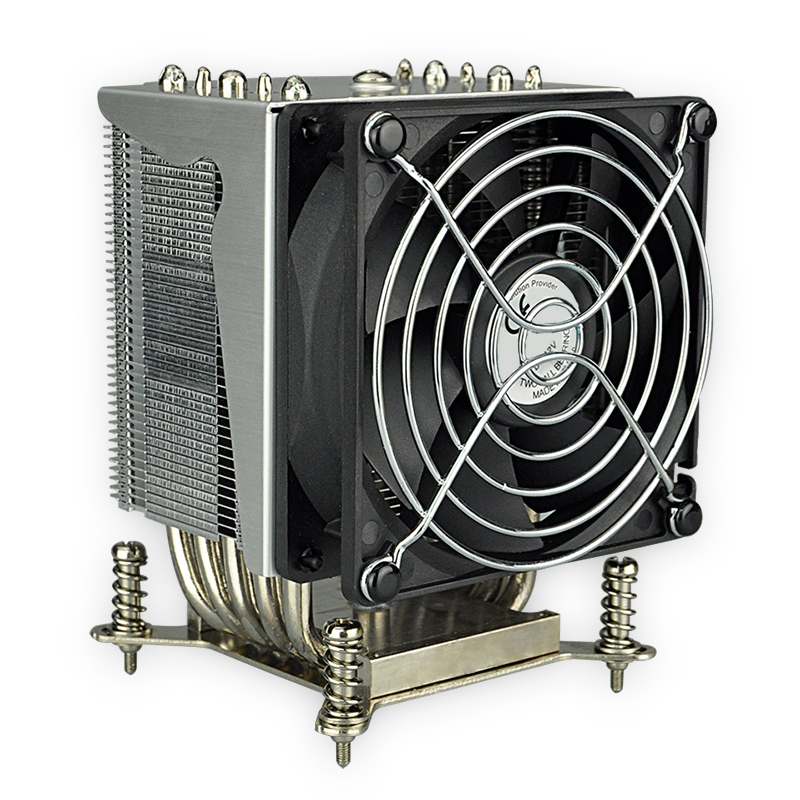Views: 104 Author: Site Editor Publish Time: 2024-01-18 Origin: Site
In the ever-evolving world of electronics, efficient thermal management remains a critical challenge. Active heat sinks, designed and often customized by specialists like custom heat sink manufacturers, play a vital role in addressing this challenge. This article sheds light on active heat sinks' significance in the electronics industry.
Heat sinks are essential components in electronic devices that dissipate excess heat to prevent overheating. They come in two primary types:
Active Heat Sinks include additional mechanical components, such as fans or blowers, to dissipate heat actively.
Passive Heat Sinks: These rely on natural heat dissipation without mechanical components.
Understanding these differences is crucial for anyone involved in electronic design or looking to customize thermal solutions.
Active heat sinks are characterized by their integrated mechanical components, typically fans or blowers, which actively circulate air to enhance heat dissipation. This design is crucial in situations where passive cooling is insufficient.
The operation of an active heat sink is based on the principle of increased airflow. The fan in the heat sink accelerates air movement across the heat sink's surface, leading to more efficient heat removal from the device.
The most common materials in active heat sinks are metals with high thermal conductivity, like aluminium and copper. Aluminium is widely favoured for its lightweight and good thermal properties, while copper offers superior heat conductivity.
Custom heat sink manufacturers often choose the material based on specific application requirements, balancing factors like thermal performance, weight, and cost.
The primary advantage of active heat sinks is their enhanced cooling efficiency, making them suitable for high-performance electronics that generate significant amounts of heat.
Functional heat sinks are particularly effective in compact spaces where passive cooling solutions might not provide adequate airflow.

When customizing active heat sinks, several factors need careful consideration. These include the size of the heat sink, the required airflow pattern, and the device's thermal load.
Custom heat sink manufacturers tailor designs to meet specific requirements, such as accommodating space constraints in a device or achieving desired thermal performance levels.
Advanced designs in active heat sinks may include features like variable speed fans, which adjust according to the temperature, or thermal sensors for optimized performance.
Liquid cold plates represent another approach to thermal management, particularly favoured by liquid hard plate manufacturers for applications requiring more intensive cooling.
Unlike heat sinks that dissipate heat through the air, liquid cold plates use a liquid coolant to absorb and transfer heat, offering efficient cooling for high-power electronic components.
Similar to active heat sinks, liquid cold plates can also be customized. Factors influencing their design include the type of coolant, flow rate, and the specific heat dissipation requirements of the application.
Customization allows for precise control over cooling, catering to specialized applications in aerospace, high-performance computing, and more industries.
When deciding between active heat sinks and liquid cold plates, several factors should be taken into account:
Heat Generation: Devices with higher heat outputs benefit more from the advanced cooling capabilities of liquid cold plates.
Space Constraints: An active heat sink with an integrated fan might be more practical in compact devices with limited space.
Noise Considerations: Active heat sinks with fans produce more noise than liquid cold plates' quieter operation, an essential consideration in noise-sensitive environments.
With their enhanced cooling efficiency, active heat sinks are essential for thermal management in various electronics. However, liquid cold plates emerge as an effective alternative for more intensive cooling scenarios. Both technologies, customizable by specialists like custom heat sinks and liquid hard plate manufacturers, offer vital solutions catering to the diverse needs of modern electronics. Understanding their distinct advantages and applications is critical to selecting the right thermal management solution for any electronic device.
A: While active heat sinks are versatile, their suitability depends on the device's specific heat dissipation requirements and space availability.
A: The choice of coolant depends on factors like thermal conductivity, flow rate, and compatibility with other materials in the system. For the best guidance, consult experienced liquid cold plate manufacturers.
A: The cost can vary depending on the complexity and specific requirements of the design. However, custom solutions often offer better performance and efficiency, justifying the investment.